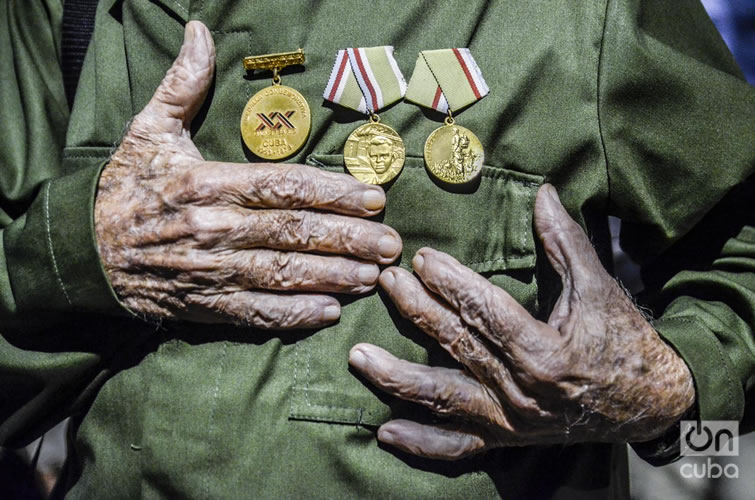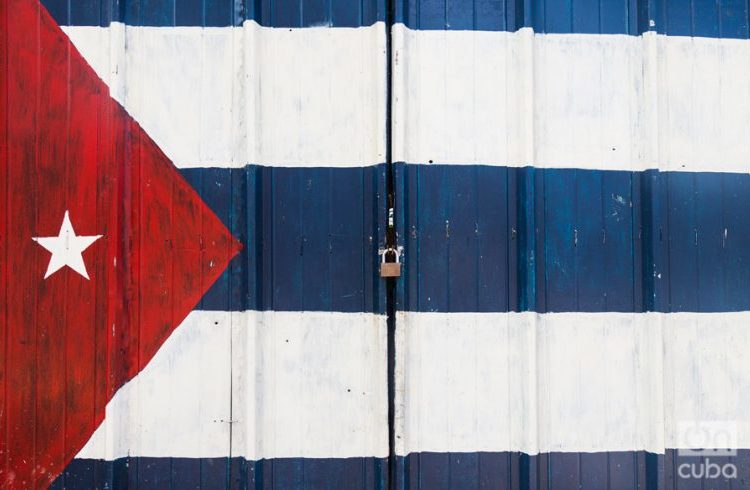In the first part of this text I presented a brief outlook of the history of Cuban governance in the Constitutions of 1901 and 1940, and also a short outline of the discussion between the parliamentary and the presidential systems. After this, I’ll stop now on the current governance, under which the new Cuban president will be regulated. In short, what will be the powers of the new president of the Councils of State and of Ministers who will be elected next April?
In Cuba, the National Assembly of People’s Power (ANPP) is defined as the “supreme organ of State power.” At the same time it has executive, legislative and constituent powers. The functions of the State and government are separated at the higher institutional level, where there is the Council of State (elected state organ) and the Council of Ministers (appointed government organ).
In the provinces and municipalities the constitutional regulation does not make a difference and establishes that the respective assemblies exercise at the same time the functions of State and government, the latter through the Administration Councils. In this way the president of the Provincial or Municipal Assembly is in turn president of the respective Administration Council. (1)
The Constitution protected the new institutional framework (1976) through several recourses that limit the performance of the executive over the Assembly: it does not have the authority to dissolve the ANPP, it cannot veto the laws that the latter approves, it imposed a collegial leadership on the Council of State, the organ that represents it between sessions, and established the system of the Local Organs of People’s Power as an instrument for the decentralization of the exercise of government.
In such a design, the head of State corresponds to the president of the Councils of State and of Ministers, which should be, according to the constitutional text, the same person.
Governance and Fidel Castro’s leadership
The system was tailor-made for the leadership and historic legitimacy of Fidel Castro. In more than one sense it was a formalization of the powers the Provisional Revolutionary Government (1959-1976) had. However, there is a little known fact about the obligatory holding of both posts by the same person.
A joint agreement by the Council of Minister and the Political Bureau of the Communist Party of Cuba (from October 22, 1974), that instructed the Commission for the Writing of the Draft Constitution of 1976, suggested that “In terms of the topmost organs of state power the creation must be foreseen of a National Assembly of People’s Delegates or simply National Assembly, as the supreme organ of State power and would study the form, integration and content of the organ elected by that National Assembly to act, through the latter’s delegation, during the period between one and another of its sessions.
This organ could be a Presidency, Council of State, Standing Committee or Executive Committee, whose president would be the representative of the Republic, according to international law, that is, the head of State…. The Constitution must also establish the Council of Ministers, the topmost executive and administrative organ, as Government of the Nation, of which the President or Prime Minister would be the head of government.”
Julio Fernández Bulté always affirmed that, according to the institutional design, the president of the ANPP, being the topmost organ of State, should be the country’s president. The aforementioned Council of Ministers agreement, signed by Celia Sánchez Manduley, contains the nucleus of the practice followed since then until now: while the Constitution does not specify it, the president of the Councils of State and of Ministers has always been considered as the country’s president.
However, the other point dealt with in the agreement is significant: it did not specify the obligation that both posts be held by the same person. Nevertheless, the final draft of the Constitution incorporated that content.

Councils of State and of Ministers, one same person forever?
Thus, the next Cuban president will maintain that profile: he/she will be the country’s president as well as the president of the Councils of State and of Ministers. Both functions have a great deal of content, but more than their amount, the merging involves two greater problems: the concentration of power and the confusion between politics and administration, or, in other words, between sovereignty and government.
A Cuban reading, badly informed about the theory and history of this matter, finds the devil of “liberalism” in the desire to separate the State and government, since it believes that it is equivalent to convene in the background the idea of the “partition into three of powers.”
Roman public law, for example, did not know the idea of partition into three, but did not confuse power with its representation. The State’s function is representative, while that of government is administrative.
It’s easy to understand for whoever wants to understand: the first stipulates, the second executes. In other words, it is about the relation between principal and agent. There are very important questions involving the construction of popular will and control of the government activity involved in such a distinction.
A first problem of the design of the institutional system is that the Councils of State (elected organ) and of Ministers (appointed organ) have attributions that make them decisive in the functioning of the system with respect to the ANPP. In practice, the legislative activity of both councils easily exceeds that of the ANPP. Since 1976 to 2016, the ANPP approved 123 laws while the Council of State drew up 344 decree-laws.
The problems is that the organ that represents the ANPP in practice has been the decisive space for the regulatory production of maximum hierarchy, when the constitutional order regulates as such the ANPP because it is the higher organ elected by the sovereign.
Certainly, the ANPP has the authority to revoke the decree-laws approved by the Council of State, but that has never happened until now.
Rendering of accounts
The model’s other problems are the following:
– the State’s rendering of accounts before the ANPP has not been a regular experience (the first rendering of accounts of the Council of Ministers took place in 1984, eight years after constitutional obligation was imposed with respect to this with a “periodic” character).
– it has not expressed the power of the ANPP as the principal authority approving the state and government performances,
– crossed, institutional controls do not exist among the State organs (only the independence of the legal functions is recognized),
– there are no concrete control mechanisms capable of being activated by the citizens: the absence of an effective constitutional control system does not channel the existence of parliamentary currents, and does not establish counter majority guarantees (that prevent or hinder a majority to legislate about especially protected issues).
Consistently with the idea with which the system was created, Law No. 89 – “On revocation of the mandate of those elected to the organs of People’s Power” -, it does not establish the right to revoke the posts of president and vice presidents of the Council of State, elected by the ANPP, even when the Constitution regulates that “those elected have the duty to render accounts on their performance and can be revoked from their post at any time.”
It could be considered that the possibility is included of its revoking in terms of “members of the Council of State.” But, as I have said before, the institutional practice considers the president of the Councils of State and of Ministers as “President of the Republic,” and the revocation of the country’s first legal powers should be a right.
It is a requirement that should not be defined by judgments of value about the popular legitimacy which the person holding the post has, but rather as an institutional requisite of the post itself.

Legitimacy and the new president
Part of the current Cuban debate about the figure of the head of State is concentrated in the discussion about the desirability of his/her direct election. However, that debate frequently leaves out the system that classifies the election of the president: the type of presidential system, of parliamentary system, or of their possible combination and innovations, within which the president must operate.
It is probable that the general framework discussion about governance will produce stronger ideas – like the forms of social control of the government activity and about the legal and political limits established for the performance of different State organs – than an exchange centered only on the form of election of the president.
Four decades after its creation, it can be confirmed that the Cuban institutional model has not been followed by any country in Latin America, including those that have developed revolutionary and progressive processes since the second half of the 20th century until now.
On the other hand, a Cuban citizen will be the country’s president, but will not have the legitimacy that the triumphant process in 1959 conferred, and his/her posterior development, to the two leaders that held the leadership post during this period.
It is to be expected that the new legitimacy will come more from the quality of his/her institutional performance – in relation to law, state democratization (deconcentration and decentralization), efficient government management, social inclusion in decision making, protection of rights, government control – than from the quality of the personal history of the future president.
Note
(1) In the two provinces created by the most recent political-administrative division, Artemisa and Mayabeque, since 2012 an “experiment” was put into practice, with no constitutional basis, which among other questions has separated the state authorities from those of the government; that is, the leadership of the Administration Council has been separated from that of the Provincial and Municipal Assemblies of People’s Power. However, a few days ago a measure in a different direction was announced: the creation of a post of vice president (appointed) of the provincial and municipal assemblies in charge of the work of the respective Administration Councils. This could give greater professionalism and stability to the government administrative work, but maintains the merging of state and government authorities in the persons of the president of the Assembly, since “he/she continues being the topmost leader of the Administration Councils.”
* The author is a Cuban professor, historian and jurist.









